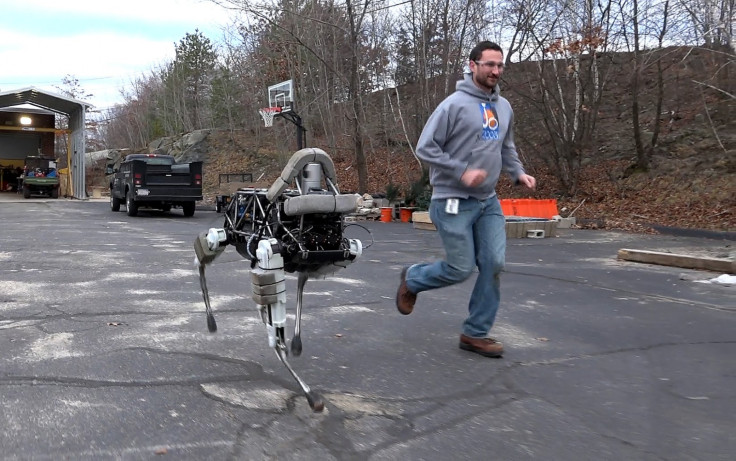US Marines reboot Boston Dynamics' robot dog Spot for military action
Spot will re-enter trials as its hydraulic legs are still better than other robots being considered.

Boston Dynamics' adorable four-legged robot dog Spot is being given a second chance to prove its worth by the US Marines, just over a year after it scrapped the project.
The US Army is keen to integrate robots into the armed forces by 2030, and to that end, the US Defense Advanced Research Projects Agency (Darpa), robotics firm Boston Dynamics, Carnegie Mellon, Nasa, Bell Hellicopter, AAI Corporation and WoodwardHRT began developing the Legged Squad Support System in 2009.
The idea was to create a four-legged robotic pack mule that could follow troops into battle, carry 400lbs (180kg) of equipment, food and supplies, be able to autonomously navigate tough terrain by itself, and move quietly.
The LS3 robot, also known as AlphaDog, was developed in 2012, but the one thing the robot wasn't good at was being quiet, due to its hydraulic leg, and it was difficult to work out how to repair it if it broke during a campaign.
Hydraulic legs trump tank treads
To solve this problem, in 2013 Boston Dynamics introduced Spot, a slightly smaller robot that featured a much quieter electric-powered engine. Spot solved the noise problem, but it could carry far less weight – only 40lbs – and it was much less clever than the LS3. Eventually in December 2015, the US Marines decided to shelve the project for good, despite having already spent $42m (£38m) on the robots.
But now the Marine Corps' Warfighting Lab has announced that it is bringing back Spot to be tested to work with ground troops this autumn because its legs potentially still work better than the Warfighting Lab's Modular Advanced Armed Robotic System, which is a small unmanned robot with tank treads.
"It's not a tracked vehicle so it can turn around on a dime. The other benefit of something like that is it can get up when it falls over, whereas MAARS can't," the Warfighting Lab's ground branch head for science and technology Captain Mike Malandra told Military.com.
"So that's really what we're looking at doing, potentially, with those kinds of things moving forward here in fall: Use it as a surrogate platform for something that is manoeuvrable in a way similar to a human."
Spot will receive AI and radio upgrades
Spot will receive some upgrades from Boston Dynamics before it is put back out into the field – its nose will now feature a 180-degree camera, and the robot dog will also have a radio and Teleop-assist logic, which is artificial intelligence to help the robot prevent itself from crashing into any physical obstacles, even if commanded to do so by a human operator.
If Spot passes testing in the autumn, it will be given a limited technical assessment in 2018 to see if it would be suitable to partner a Marine in the field on ground warfare operations like patrolling and reconnaissance.
"We're looking to put them in environments and lanes that are similar to things we've come up with through wargaming and through other things, that fit our operational concept that was just published for 2025," said Malandra.
"To be able to put [the robots] in lanes where we can evaluate metrics such as lethality and tempo, which are very fluid, and what they actually mean. So how do we quantify that, how do we create a baseline ... to evaluate whether or not a system that can provide autonomous tasking is beneficial or not."
© Copyright IBTimes 2025. All rights reserved.






















